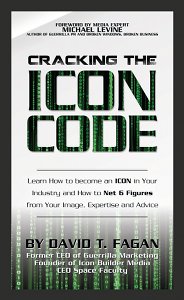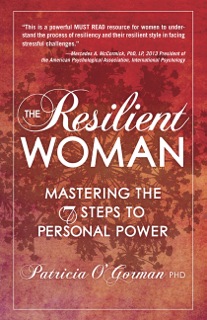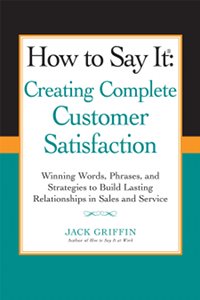Posted by Elena del Valle on July 12, 2013

In Living Color
Nina Jablonski, professor, Anthropology at Pennsylvania State University believes there is no such thing as a pure race. Her research indicates skin color developed as a way for humans to adapt to their surroundings and over time became a means, with little relationship to reality, to label someone’s social worth. In Living Color: The Biological and Social Meaning of Skin Color (California University Press, $29.95) she explores these concepts.
The 260-page hardcover book published in 2012 is divided into two main sections. In the first half of the book, she examines the biology of skin tone and how over the centuries skin pigmentation allowed people to adjust to their environment. Skin color in pale people comes from blood and the skins own connective tissues. Eumelanin is the dominant source of skin color in general. Light skin was necessary for populations living in regions with little sunlight while dark skins shades were useful in places with an abundance of sunlight. She addresses the challenges brought about when migration, travel and modern life cause people to live away from their ancestral home, citing vitamin D deficiency as one of the dangers.
In the second half of the book, she delves into the origin of the concept of race saying there is no such thing as pure human populations or races. Over history, she says, people mixed with other people around the globe resulting in mongrel groupings with only minor variances. In time, European elites contributed to the idea of races categorized by skin color, social worth and cultural capability. Because of its association with positive aspects and high standing a preference for light skin arose independently in different countries, according to the professor.
This in turn led to the social stratification, discrimination and racism that endure today. She goes on to say in the closing chapter that in the United States and many developed countries people with the darkest skin color remain in the “periphery of society” and are physically marginalized suffering from restricted access to high quality education, food, and health care.
Jablonski, recipient of the 2012 Guggenheim Fellowship, is also author of Skin: A Natural History.
Comments:
Filed Under: Books
Posted by Elena del Valle on June 28, 2013

You Can Beat Lung Cancer
Photos: Carl Helvie, Francisco Contreras, Tanya Harter Pierce, Bernie Siegel
Carl Helvie, RN, DrPH, now 81 years old, was told 38 years ago that he had lung cancer and only six months left to live. He recovered with alternative healing methods in lieu of traditional cancer medical treatments such as surgery and chemotherapy. Today, he’s healthy, takes no prescription medications and is one of the longest living cancer survivors, according to You Can Beat Lung Cancer: Using Alternative/Integrative Interventions (Ayni Books, $26.95). The 312-page softcover book published this year is divided into four main sections: an overview of lung cancer, the author’s own experience, medical issues, and holistic treatment options.
“Harsh chemicals, devastating surgeries and painful procedures for conventional cancer treatment are not your only option,” said Helvie in a press release. “I saw that lung cancer survival rates had not changed over time and wanted people to know there are other non-toxic, non-invasive treatment options that are successful and I could speak as both a profession health care provider and educator and also as a long term survivor who use non-toxic interventions,” he said by email when asked why the wrote the book now.
Helvie relied on holistic natural methods to treat his condition: supplements, herbs, enzymes, diet, prayer and meditation. His quality of life since the diagnosis of lung cancer has been superior than people often expect at his age. He points out that many older Americans have some form of chronic illness and by age 75 may be taking five prescribed medications daily.
Helvie is not surprised by the recent findings of a team of researchers in Washington State who discovered that chemotherapy fuels the growth of cancer cells, making it more difficult to destroy them in subsequent sessions.

Carl Helvie, RN, author, You Can Beat Lung Cancer
“No I do not receive money for services or products. As a cancer survivor and registered nurse I believe in helping others and the help I can provide should be offered for free,” said the author by email in response to a question about whether he sells products or services to treat lung cancer. “I communicate with around 60 cancer patients monthly and provide encouragement, support, and resources as best meets their needs. God saved my life when I had cancer and I believe in offering whatever I can as futher evidence that God is in all of our lives.”

Francisco Contreras, M.D.

Tanya Harter Pierce, MA, MFCC
A registered nurse with two masters and a doctorate in public health and wellness, Dr. Helvie has decades of experience as a nurse practitioner, educator, author and researcher. According to promotional materials, he has published eight books and was a contributor to others, and has published or presented 100 papers and articles in the United States and abroad. Also, he developed and published a nursing theory used worldwide, and established a nursing center to provide primary care for homeless and low-income individuals and families. He hosts the Holistic Health Show on BBS Radio, counsels cancer patients, markets his books and is in the process of establishing a holistic cancer foundation.

Bernie Siegel, M.D.
Francisco Contreras, M.D., president and chairman, Oasis of Hope Hospital; Kim Dalzell, Ph.D., RD, LD, who has helped people with nutrition and cancer; James Forsythe, M.D., HDM, who practices integrative medical oncology and anti-aging medicine; Tanya Harter Pierce, MA, MFCC, author, Outsmart Your Cancer; and Bernie Siegel, M.D., a physician and author, also contributed to the book.

Click to buy You Can Beat Lung Cancer
Comments:
Filed Under: Books
Posted by Elena del Valle on June 14, 2013

Cracking The Icon Code
Photo: David Fagan
Influence, credibility and exposure combined can act as catalysts to success for business leaders who know how to leverage them, according to David T. Fagan, author, Cracking The Icon Code Learn How to Earn an Icon Status and How to Net 6 Figures from Your Image, Expertise and Advice (On the Inside Press, $14.95). He believes it’s good to establish complimentary relationships but that at the end of the day it’s a free capitalist market and competition is necessary.
In the book, he goes on to say that people who sell a product or service for a living need to establish good contacts and show their clients what makes them worth buying from compared to doing nothing or buying from a competitor. Being bold, causing a little controversy and speaking out about a topic can be beneficial, the author points out.
The more someone can do for others the more influential he or she is, he says in Chapter 4 where he provides a test for readers to determine their Icon Influence Factor. To lead, he points out, it’s necessary to have a high score. In the same chapter he has Credibility Competency Score and Exposure Energy Score tests. He dedicated two chapters to websites as marketing tools and discusses the value of media, writing a book and other ways a reader may spread his reputation as an icon.
The 157-page softcover book published this year is divided into 40 short easy-to-read chapters. Fagan is former chief executive officer of Guerrila Marketing. Books he authored or co-authored include: Guerrilla Rainmakers, The Inside Drive, How to Raise an Entrepreneur, Secrets of Peak Performers, Mad Ads: Madison Avenue Advertising on a Main Street Budget, and Zero to Hero in 90 Days or Less.
Comments:
Filed Under: Books
Posted by Elena del Valle on June 7, 2013

Outsource Smart book cover
Photo: McGrall Hill
Daven Michaels, founder and chief executive officer, 123Employee, believes paying consultants outside a company to do work owners and managers can’t or don’t want to do will save the company time and money. In Outsource Smart Be Your Own Boss without Letting Your Business Become the Boss of You (McGraw Hill, $22) he explains his thinking. The more an executive can delegate, the better he says in the book. And, the more work a company can hire out the more money it saves on employee costs. In his book, he proposes that for every task there is a contractor available.
The 226-page softcover book published this year is divided into twelve chapters: The Outsourcing Paradigm, The New Definition of Insanity, Outsourcing 101, How to Hire and Train an Outsource VA, Legal and Financial Realities: How To Manage an Outsourced Virtual Assistant, The Marketing Funnel: Outsourced List-Building and List Creation, Outsourced Website Creation and Maintenance, Outsourced Article Marketing and Blogging, Outsourced Video Marketing, Outsourcing the Google Ranking Race, Quality Control in Bad Times, Quality Control in Good Times.
The author reasons that an executive who is working 16 hours a day should delegate or outsource any task below his pay grade. The alternative is that he is working extra hours at minimum wage performing tasks someone else could be doing more profitably. The top outsourcing countries, according to Michaels, are India, Philippines, Canada, Ireland and Russia followed by China, Mexico and South Africa. Each region, he explains, has areas of specialization.
Comments:
Filed Under: Books
Posted by Elena del Valle on May 24, 2013

Innovate Products Faster book cover
Photo: TCGen Press
Developing new products does not require a slow and ineffective process. In Innovate Products Faster: Graphical Tools for Accelerating Product Development (TCGen Press, $19.95), John Carter and Jeanne Bradford, chief executive officer and principal respectively of TCGen Inc., make the case that companies can have innovation and speed. To do so, they say, it is necessary to have mastery of tools and methodologies that will support managers in making better decisions faster. They say the tools available should be those that can be quickly understood and implemented. They should be “tactically straightforward, but strategically powerful and can be applied across different industries and organizations, from start-ups to Fortune 100 companies,” according to the consultants.
For managers and their teams they propose a Product Innovation Process they have refined and tested with 50 clients. It has three checkpoints, Concept Check-In, Product Check-In, and Release Check-In, or defined interactions between the management and the core cross-functional development teams.
They serve as peer-to-peer discussions rather than critical, hierarchical, and stress-filled reviews. Carter and Bradford outlined five core disciplines and subsets of best practices for each one. The chapters, each dedicated to a single best practice, are divided into three parts: a description, a graphic and a fictional case study. The authors indicate the best practices apply to hardware, software, cloud, device or service development. They rely on three fictional companies to illustrate the case studies outlined throughout the book.
The 240-page soft cover book is divided into an Introduction and four sections: Strategy, Management, Execution, Organization, and Process. The authors suggest readers start at the Appendix where they list the solutions for the most common problems.
Carter, founder of the company, has advised technology firms such as Apple, Cisco, NetApp and IBM, over a 35-year career. He serves on the Board of Directors of Cirrus Logic. He has raised private equity to successfully execute a roll-up in the Consumer Electronics sector and has assumed senior executive roles.
Comments:
Filed Under: Books
Posted by Elena del Valle on May 17, 2013

Pinterest for Business book cover
Photos: Karen Leland
Karen Leland, owner of a branding and marketing firm, believes in the power of Pinterest. People love pictures, she says. She points to recent studies that indicate that nearly 20 percent of women using the Internet are on Pinterest, 72 percent of Pinterest users are women, 66 percent of those are age 35 or older, and the average amount of time visitors spend surfing the Pinterest site is an hour.
In Entrepreneur Magazine’s Ultimate Guide to Pinterest for Business, a 189-page soft cover book published this year, she set out to create an easy-to-use guide to Pinterest as a valuable source of prospects, promotion and profits. The book that retails for $21.95 is divided into 17 chapters.
“Great business brands are about telling compelling, congruent stories, and Pinterest is at its core about storytelling in pictures,” said Leland in a press release. “Pinterest has tapped into this visceral lover of visuals, and no small business, entrepreneur or corporation can afford to miss the boat on bringing what they offer beyond words and into images.”
She begins the book by pointing out that the popular social media website is the fastest growing social media website in history. It had 10 million users when she wrote the book. Her promise to readers is: to show them the basics of getting started in Pinterest; building boards that make fans become customers; creating a Pinterest community from activities that drive engagement and appropriate strategies; applications for small businesses; and best practices.

Karen Leland, author, Pinterest for Business
In the final chapter, she mentions a bonus chapter available on her website as an ebook, a podcast with her about opportunities and mistakes, a webinar on the business use of Pinterest and a marketing quiz. She outlines a three-step process to apply her method. She also invites readers to connect with her on social media and to hire her consulting or public speaking services.
Leland is president of Sterling Marketing Group where her clients include AT&T, Apple, American Express, Cisco, Johnson & Johnson, Marriott Hotels and Oracle. She is the author of eight books.
Comments:
Filed Under: Books
Posted by Elena del Valle on May 3, 2013

Foodopoly book cover
Photos: Wenonah Hauter, Abby Greenawalt
The United States is in a food crisis the result of government deregulation and the practices of a small group of large and powerful corporations, says Wenonah Hauter, a national healthy food advocate. After researching the subject she outlined her findings in Foodopoly: The Battle Over the Future of Food and Farming in America (The New Press, $26.95). The process of researching, writing and publishing the 355-page hard cover book required 18 months. Consolidation in the food industry and corporate control of the food processes make it impossible for farmers to produce healthy crops and ultimately reduce and impoverish consumers choices at the store, she says.
Hauter describes how independent farmers and food processors have been driven out in place of Cargil, Tyson, Kraft and ConAgra among others. Deregulation in turn has weakened the antitrust laws reducing competition. Consumers should have benefited from the economies of scale resulting from the lesser competition and large production facilities but they haven’t, she says; adding that the industry is rife with politically driven policies designed to benefit the already large and powerful companies in the lead.

Wenonah Hauter, author, Foodopoly
Examples of such policies, she says, include irrigation subsidies with publicly funded water projects, the enactment of the Cuban sugar tariff resulting in high fructose corn syrup replacing sugar in the top spot, and poor federal oversight that keeps the United States Department of Agriculture (USDA) from testing meat for contaminants.
The author points to USDA data indicating that only 5 percent of farms supplying local markets are large but that those farms were the source of 93 percent of the so called local foods in supermarkets and restaurants; while 81 percent of farms selling local food are small with sales of $50,000 or less, and 14 percent of farms selling local foods are medium with sales between $50,000 and $250,000. The small and medium farms accounted for three quarters of direct to consumers foods, and 7 percent of the local foods in supermarkets and restaurants.
She believes the local food movement is insufficient to solve the problems our country faces. Instead, she proposes that drastic political measures are required to reform the broken system. She was too busy to respond to questions for this article or accept an invitation for a podcast interview, according to a spokesperson. To a question about the impact the book published in 2012 has had so far the spokesperson replied: “As Wenonah travels across the country she has met with hundreds of people who thank her for speaking truth to power. They tell her that Foodopoly has inspired them to do the same. This is the first step towards growing leaders who can grow the movement for real change.”
Hauter is executive director of Food & Water Watch. She has worked at the national level on food, water, energy and environmental issues. She owns an organic farm that provides vegetables to five hundred families in the area as part of the Community Supported Agriculture (CSA) program. In 2008, she wrote Zapped! Irradiation and the Death of Food with Mark Worth and in that same year contributed to the collection of essays Water Consciousness.
In response to a question about the political power changes she talks about in the book, the spokesperson replied: “The political shifts discussed in the book didn’t happen overnight, so we can’t expect them to shift back overnight either. Fundamentally fixing the food system is going to take some time — a decade or more to begin to see real change. As Wenonah says in the book, there are no shortcuts to building the long-term political power needed to reclaim our food system, our democracy and our commons. That said, people are becoming more alert and tuned into the corporate abuses of our food system. The fact that activists were able to pressure more than 5 percent of grocery stores, including Whole Foods and Trader Joe’s, to agree not to sell GE salmon, is one recent indicator that more and more people are paying attention and mobilizing. However, we need more of those people to engage in the political system and hold their elected officials accountable.”
Comments:
Filed Under: Books
Posted by Elena del Valle on April 19, 2013

Pound Foolish book cover
Photos: Andrew Walker
In the 1950s, less than 5 percent of Americans had stock market investments. By the 1980s, that number had quadrupled to one in five Americans and by the millennium more than half of the population had ties to the stock market, according to journalist Helaine Olen.
She is convinced that a financial products and self help industry promoted a dream to Americans. It had the allure of magic, Olen says in her book Pound Foolish Exposing the Dark Side of the Personal Finance Industry (Portfolio/Penguin, $27.95), promising to make up for stagnant salaries, unequal income and dwindling financial safety nets. The sellers? People, businesses and organizations who stood to gain from the public’s buy in of the dream. The personal finance and investment industrial promised many things it couldn’t deliver, she says.
The 292-page hardcover book she began working on in 2009 was published in 2012. It is divided into nine chapters: What Hath Sylvia Wrought?, The Tao of Suze, The Latte Is a Lie, Slip Slidin’ Away, The Road to Pas Tina, I’ve Got the Horse Right Here, An Empire of Her Own, Who Wants to Be a Real Estate Millionaire?, Elmo Is B(r)ought to You By the Letter P, and We Need to Talk About Our Money.
Olen concludes that given the current economy personal financial success born of following the advice of self proclaimed self help gurus is unlikely. Financial planning can help people get out and stay out of debt, be instrumental in preparing for retirement and reaching long term goals; but no amount of financial planning can overcome a downward economy or bad circumstances, she says. What to do? She recommends being honest about our personal situation and beginning a conversation about our community’s financial situation.

Helaine Olen, author, Pound Foolish
A freelance journalist formerly in charge of the Money Makeover series at the Los Angeles Times, Olen’s work has appeared in The New York Times, The Washington Post, Slate, Salon and Forbes. She lives in New York City with her family.
Comments:
Filed Under: Books
Posted by Elena del Valle on April 5, 2013

The Resilient Woman book cover
Photos: Patricia O’Gorman
Patricia O’Gorman, Ph.D., a psychologist who has worked on women, trauma and substance abuse issues, believes women are wired to try to make others happy. When they don’t live up to these self-imposed expectations, she says, they blame themselves for the hardships that follow. In The Resilient Woman: Mastering the 7 Steps to Personal Power ( HCI Books, $15.95), she proposes that the messages women learn from a young age drive them to self-sabotaging Girly Thoughts that dictate who they are and how they should act.
She defines a resilient woman as one who overcomes a traumatic event or experience such as divorce, job loss, move, marriage, motherhood, health crisis, aging or a childhood trauma. In the book, she offers an analysis of the Girly Thoughts which she equates with anti-resilience, and self-evaluation tools for readers to identify their thoughts and behaviors. She also proposes seven daily steps to lead women to create and strengthen their own resilience.

Patricia O’Gorman, author, The Resilient Woman
Society expects women to have many of the same characteristics that our grandmothers and mothers had, she says. Based on insights shared by women at workshops the psychologist has conducted, many women feel trapped believing that if they accomplish their career goals they become less desirable or not desirable; but if they seek to be desirable they must sacrifice parts of who they want to be. These beliefs often lead to anger and depression and feelings of low self esteem so prevalent women become unaware of them or their source, she says.
The 300-page softcover book published this year is divided into three main sections: Warming Up: Detecting and challenging Girly Thoughts; Start Dancing: Develop a Resilient Mind-Set; and Daily Action Steps to Develop Conscious Resilience; and 13 chapters. One of the first researchers of issues related to children of alcoholics in the early 1970s, documenting the impact of alcoholism and sobriety on adolescent development, O’Gorman created the Department of Prevention and Education for the National Council on Alcoholism and Drug Dependence (NCADD).
Comments:
Filed Under: Books
Posted by Elena del Valle on March 15, 2013

How to Say It book cover
Photo: Berkley Publishing Group
In How to Say It: Creating Complete Customer Satisfaction Winning Words, Phrases and Strategies to Build Lasting Relationships in Sales and Service (Prentice Hall Press, $18) Jack Griffin sets out to share practical, results-oriented guidance for effective communication with customers through sample words, phrases, scripts, and strategies applied to real-world examples.
A communications expert and consultant to small businesses, entrepreneurs, cultural institutions, and publishers Griffin has authored other How to Say It titles including How to Say It at Work with estimated sales of 235,000. In this title, published in 2013, he outlines ways to use language to create satisfaction in the customer experience and in the sales-service cycle.
He discusses sales and customer service issues in an integrated way because he believes it reflects today’s business reality and a model that identifies customers as more than individuals to sell to but also as individuals to be satisfied. He thinks that management increasingly expects sales staff to address customer service issues that in the past might have been passed on to the customer service department. At the same time, management expects customer service staff to assist with customer purchases, particularly when it comes to upgrading, upselling, and customer communities promotions.
The 260-page softcover book is divided into 18 chapters and three parts: Speak the Language of Yes, Master the Situation, and Speak the Language of Complete Satisfaction.
The author begins by addressing communication that focuses on the customer, his or her needs and wants, ways to identify new customers, developing customer loyalty, overcoming resistance and using language to close. In Chapter 13, he shares examples of a variety of words for different occasions. In the Words of Credibility section, he recommends readers use words that develop confidence and trust and not get carried away making promises they can’t keep. Examples of such words he lists are guarantee, integrity, commitment, absolute and ethical.
Comments:
Filed Under: Books



























